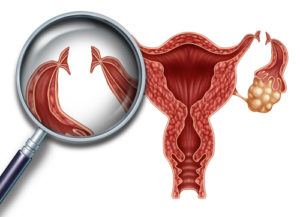Back to Contraception List
Male Sterilisation
Vasectomy is the common name for male sterilisation and is a popular method of modern family planning chosen by millions of men worldwide. It offers a safe, convenient, and effective permanent method of family planning (IFPA, 2017). If done properly, it is 99% effective – although this is not always successful (Failure Rate is 1 in 2000).
The male sterilisation involves having surgery to cut the tubes that carry the male sperm, therefore the sperm is not present when the male ejaculates.
Benefits of Sterilisation
- The procedure is useful for a couple who have had their children and do not wish for further pregnancies.
- The procedure can be carried at a doctors surgery under local anaesthetic.
Disadvantages of Sterilisation
- The procedure is permanent.
- If reversal is required, the procedure is difficult and most often unsuccessful.
- Does not protect against STIs.
- Men experience discomfort and swelling for a short time after the procedure (HSE,2016).
For more information on male sterilisation , click on any of the following links;
Female Sterilisation
Female sterilisation is an effective form of contraception that is intended to permanently prevent a woman from being able to get pregnant. The method of female sterilisation is a surgical procedure that involves cutting or blocking the female fallopian tubes to prevent the woman’s egg from meeting the sperm. It can be a minor operation, with many women returning home the same day.
In most cases, female sterilisation is more than 99% effective, and only one in 200 women will become pregnant after the operation.
Benefits of choosing Female Sterilisation
- Does not affect the spontaneity of sexual intercourse or interfere with intercourse
- A beneficial method for females who already have their families complete and do not want another pregnancy
- No long term effects
- It does not effect sex drive
- Does not effect hormone levels
Disadvantages of choosing Female Sterilisation
- If reversal is ever required the procedure is difficult and most often unsuccessful.

- The sterilisation requires surgery.
- Does not protect against STIs.
- The procedure is not effective immediately after surgery.
- Small risk of complications.
- It is possible for sterilisation to fail (1 in 200 of cases).
- May get heavier periods (HSE, 2016).
Periods
After female sterilisation, you will continue to have periods. If you previously used the combined contraceptive pill, you may notice that your periods are now heavier. This is not due to the operation, but because you have now stopped taking the pill, which can make your periods lighter (HSE, 2016).
Pregnancy test
Before you have the surgery, you will be given a pregnancy test to make sure that you are not pregnant. It is important to know as the surgery will block your fallopian tubes. If you are not, the surgery will go ahead however if you are – there is a higher risk that any pregnancy will become ectopic and there will be no surgery. An ectopic pregnancy can be life-threatening because it can cause severe internal bleeding.
Contraception
You will be asked to use contraception until the day of the operation, and to continue up until your next period (if you are having your fallopian tubes blocked-tubal occlusion) or for around 3 months (if you are having fallopian implants- hysteroscopic sterilisation)
Some women who have been sterilised regret it, especially if they are under 30 years, have had no children or were not in a relationship at the time. It is essential that you are sure about it before you have it done.
For more information on female sterilisation , click on any of the following links;